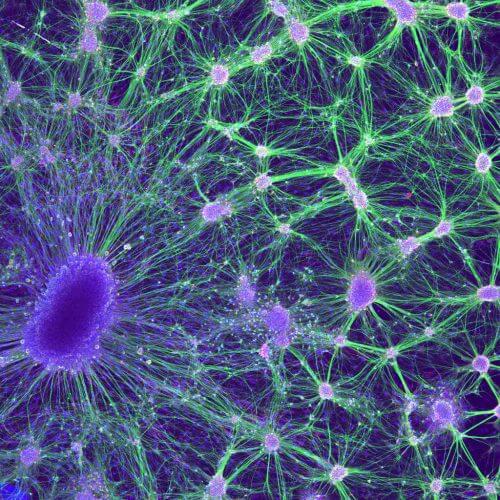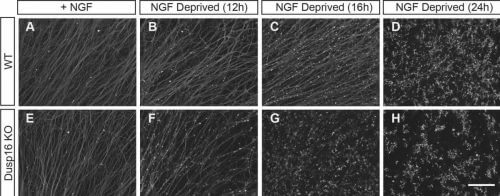What mechanisms that come into action in the nervous system during embryonic development may be associated with neurodegenerative diseases that appear later? Scientists from the Weizmann Institute discovered a new mechanism of "acceleration and braking", which controls the rate of loss of nerve fibers and their pruning during the stages of embryonic development. It is possible that neurodegenerative diseases work by 'hijacking' certain components of the nervous system before it matures.

We are all nervous, in every sense of the word. Our nerve cells, similar to trees, send out long thin branches, called axons, which carry signals to all parts of the body. In normal embryonic development, a considerable excess of axons is produced. In most of them, a natural "pruning" will take place - a process designed to ensure that only essential connections remain in the body, and this for the proper activity of the nervous system.
After the maturation of the nervous system, loss of an axon or nerve cell usually occurs in cases of severe injury or neurodegenerative disease such as amyotrophic lateral sclerosis (ALS), and peripheral neuropathy. The development processes of these diseases are not sufficiently understood by us, which of course makes it difficult to develop effective drugs and treatment methods.
Prof. Avraham Yaron, and former research student Maya Maor-Noff, from the Department of Biomolecular Sciences at the Weizmann Institute of Science, believe that understanding the mechanisms that shape the nervous system during fetal development, and in the first years of life, may also provide insights into neurodegenerative diseases. In their study, QReleased Recently in the scientific journal Neuronn, the scientists discovered a new mechanism of "acceleration and braking" which controls the rate of loss of axons and their pruning during the stages of development, and identified in it the activity of genes involved in models of nerve damage which serve as the subject of research.

The scientists grew sensory nerve cells on a substrate that contained growth factors - then, to simulate a developmental pruning process - removed the growth factors from the substrate, and checked which genes responded to this with increased expression. They compared the list of genes in their hands to other groups of genes, which are expressed in response to nerve damage. One such gene - Dusp16 - appeared prominently in both groups, so the scientists decided to investigate it in depth, to check if it has a role in decomposition processes.
Surprisingly, the researchers found that precisely in neurons that lacked the gene and the protein it encodes, the axons disintegrated faster. From this they concluded that the Dusp16 protein is an inhibitor or "brake", which slows down the decomposition process, and does not encourage decomposition, as they believed.
To understand the protein's activity, the scientists compared the lists of genes whose expression was increased in response to developmental pruning or nerve damage, and found another gene common to both groups - Puma. In the past it was shown that the product of this gene, the Puma protein, is part of the system of "programmed" cell death, which is designed to cause cell suicide, to avoid causing damage to the entire organism. Is this fact related to the activity of the Dusp16 protein? To answer this question, the scientists examined nerve cells lacking Dusp16. This is how they discovered that, in its absence, the expression of the Puma protein increases. This finding strengthens the argument that the Dusp16 gene has a protective role. Later it was also discovered that in nerve cells lacking Dusp16 the protein p53 - a protein essential for the expression of the Puma protein - becomes "hyperactive". At this point, the researchers were able to connect the chain of events that occur under normal conditions. According to their findings, in response to removing the growth factors from the substrate, Dusp16 stops p53, which is necessary for the expression of the Puma gene, thus inhibiting the disassembly or pruning of axons.

"We were surprised to discover that instead of the pruning process moving forward at 'full speed' after it has started, the nerve cell uses an active program - in the form of Dusp16 - to prevent or slow down the disassembly process," says Prof. Yaron. "Our findings point to the possibility that neurodegenerative diseases work by 'hijacking' certain components in the developmental process of the nervous system, before it matures; For example, they may cause the loss of inhibitors such as Dusp16, or the over-expression of genes that promote degradation such as Puma - and thus, accelerate the degeneration of nerve cells."
In a review recently published in the journal Current Biology, Prof. Yaron and Prof. Oren Shuldiner, from the Department of Molecular Biology of the Cell, explain that the discovery of similarities between neural pruning in normal development and degeneration in disease states may pave the way for the development of treatment methods to cure these diseases or to slow the rate of their worsening.
#Science_Numbers
About 50% of the neurons die during the maturation of the nervous system during embryonic development, and even after birth.
